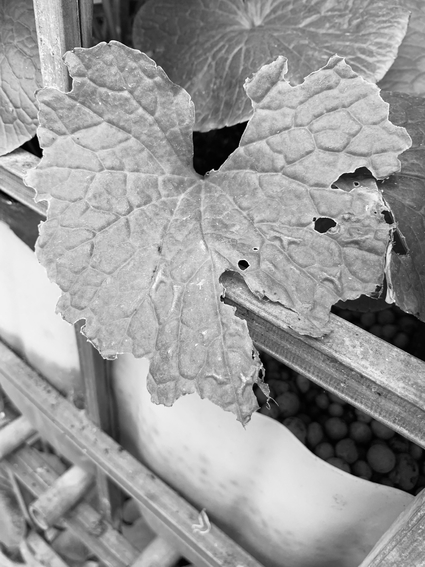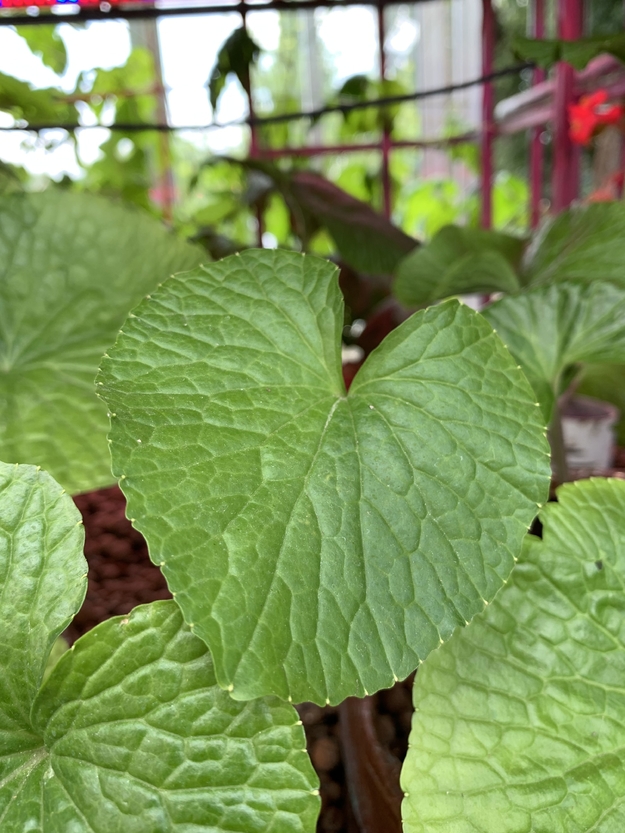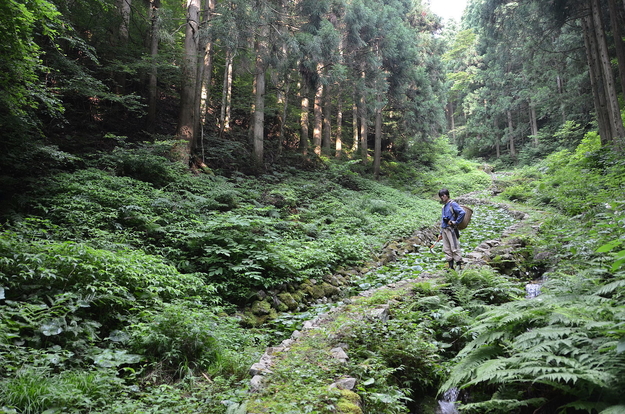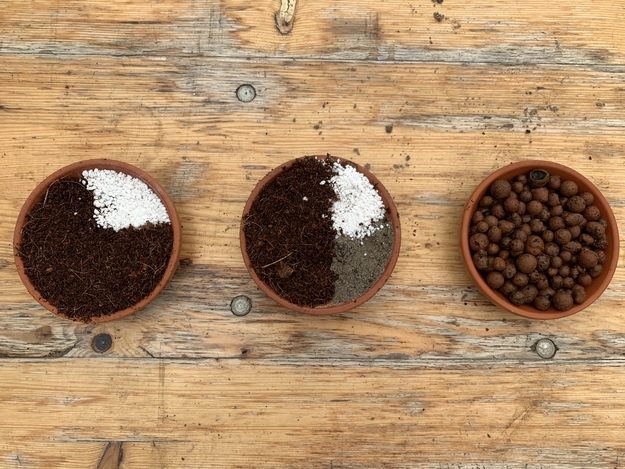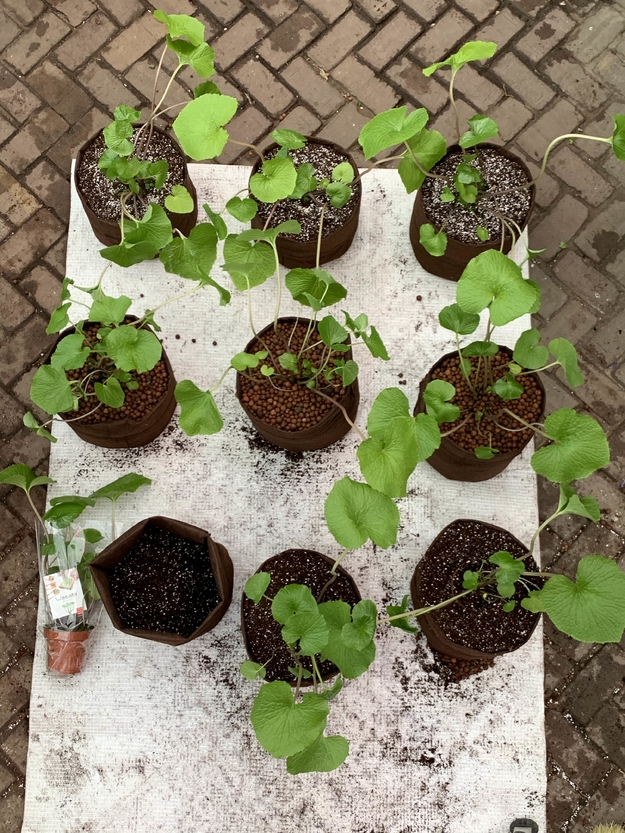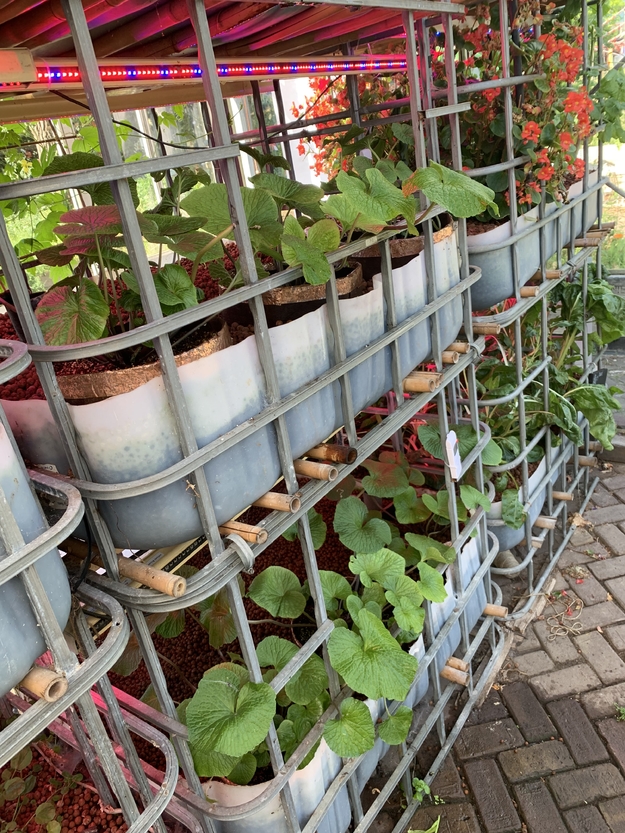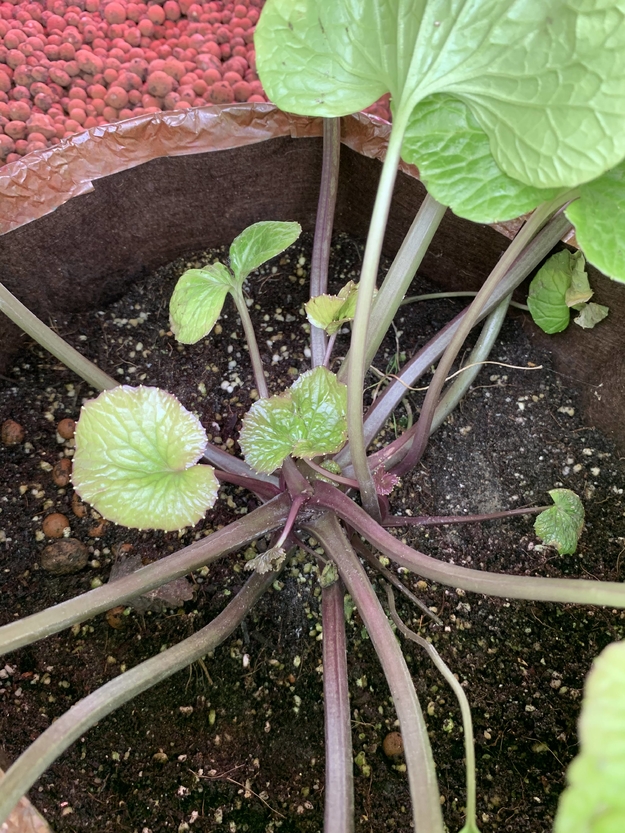Many of our visitors are often surprised to see that Wasabia Japonica is actually a plant in itself. The neon green tubed paste we associate “wasabi” with is an imposter, horseradish cloaked with trace amounts of wasabi, some flavourings and green dye. Fresh, real Wasabi averages 350 euros per kilo because it is one of the most difficult crops to produce on a commercial scale. The plant requires extremely particular conditions for periods of 2-3 years to produce a sizable yield. Additionally, with the international boom in Japanese cuisine, the slow-growing stems are more sought after than ever. Making it common to see just the leaves of the Wasabi plant selling for a significant price.
Wasabi is native to the shallow waters of Japan’s clear mountain streams, under the cool shade of the trees lining the banks. Investigating the technical details of the natural habitat unveils that the water’s pH, nutrient content and (ambient) temperature are critical factors in determining the crop’s success. Our system's ebb and flow naturally, along with shaded beds lower in the towers, is already advantageous. However, the greenhouse gets very hot and humid on sunny days, and lava stones, the medium in the grow beds, are not suitable for growing large stems and rhizomes. Hence we had to find a way to introduce a soft, soil-like medium into the grow beds whilst ensuring that it does not flow away, blocking pipes and pumps.
Our solution? Felt bags and Coco coir. Coco coir is a hydroponic substrate produced with waste from the coconut milk/water industry. Coconut husks are soaked, ground down and composted to produce a soft, light and sterile substrate. Coco also has the added benefits that it equally distributes moisture throughout the pot, and it does not compress over time, facilitating optimal long-term conditions for root growth. Meanwhile, felt bags are produced from waste fabric, making them permeable. The permeability is essential because it allows the water to flow without having any of the coco coir wash away. The bags also provide a substantial rim above the beds, lined with copper tape, a non-lethal snail repellent. Given the limited range of resources available on wasabi cultivation, we decided to take this as an opportunity to investigate the efficacy of different substrates. Currently we are comparing Perlite + Coco (30:70), Perlite + Sand + Coco (30:20:50) and hydroponic clay pebbles (100).
Whilst the intact wasabi root retains its sinus shattering properties for months under the right conditions, the freshly grated paste is good for only 15 short minutes, hence expect it to be served tableside at Mediamatic Eten in the future! Our talented chefs will also incorporate the leaves and stems into our menu, which can be done before the root is ready for harvest. Our unique project will hopefully allow a growing number of Amsterdamers to experience genuine Wasabi, grown with catfish shit, in Amsterdam.
